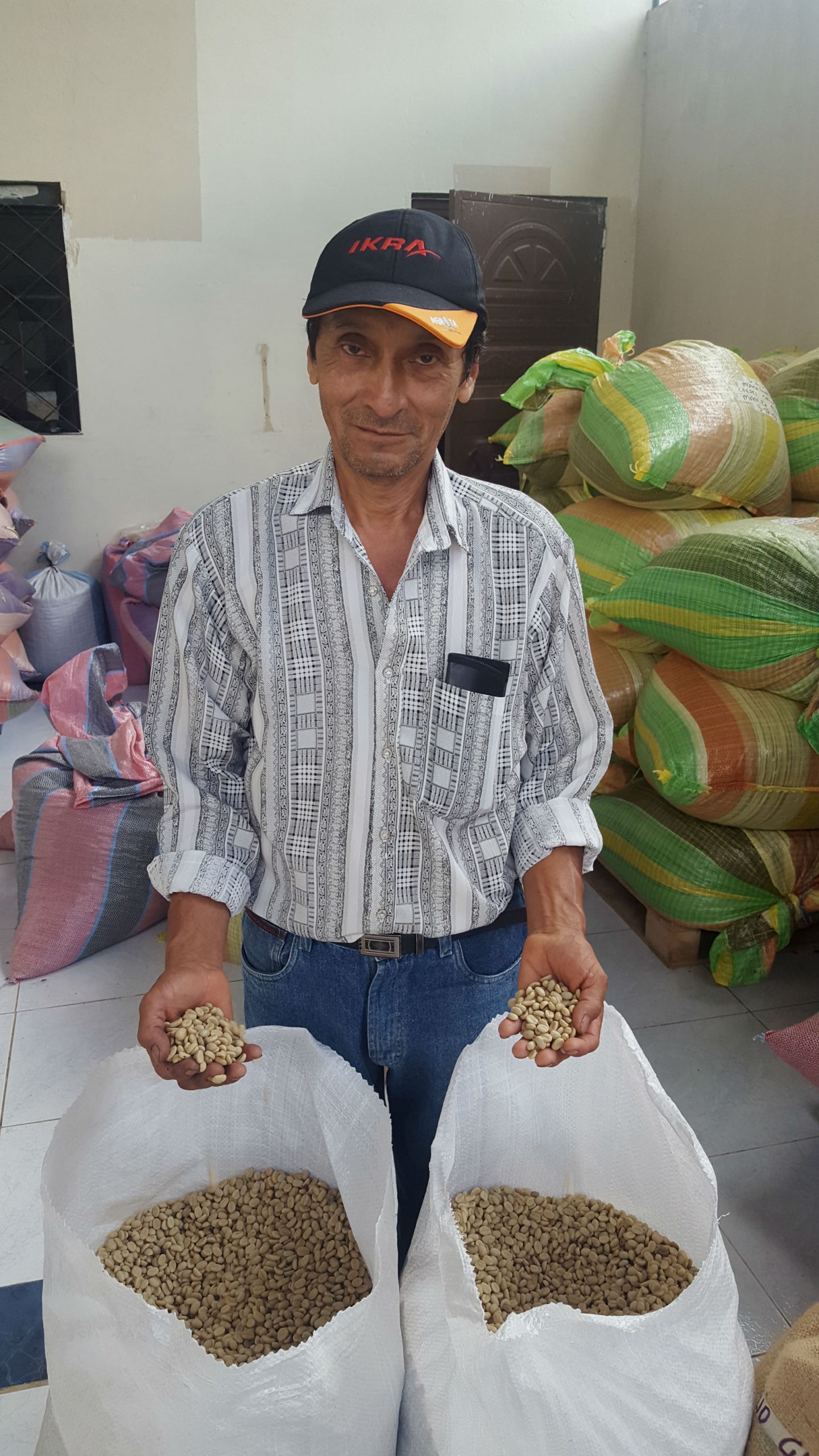Ecuador Zamora Chinchipe Bracamoros Blend 85+ – *52260* – 27284-1 – 69.0 kg GrainPro Bags – SPOT RCWHSE
Position Spot
Bags 0
Warehouses Oakland
Flavor Profile Cherry, red grape, banana, cocoa
Please Note This coffee landed more than 8 months ago.
Out of stock
About this coffee
Grower
20 producers organized around APECAP & FAPECAFES
Altitude
1400 – 1800 masl
Variety
Bourbon, Typica Mejorado, Sidra
Soil
Clay minerals
Region
Palanda municipality, Zamora Chinchipe, Ecuador
Process
Fully washed and dried on raised beds
Harvest
May - August
Certification
Conventional
Coffee Background
Loja and Zamora Chinchipe are two of Ecuador’s southernmost provinces. This part of the country is almost entirely high elevation and is covered in numerous microclimates of páramo (alpine tundra) humid forests, and jungle. This stretch of the Andes is a kind of ecological bridge between the vast inland Amazonian basin to the east, and the coastal desert of northern Peru. It’s a unique blend of humid and arid zones with an elevation and fertility that privileges specialty coffee production, particularly that of heirloom typica and bourbon lineage varieties increasingly unique to Ecuador and rare pockets of Peru. Zamora Chinchipe in particular, because of its closeness to the Amazon, is associated by Ecuadorians with an unparalleled natural wealth, and coffee producing areas are interspersed with national parks and protected forests.
Before the development of Ecuador’s northern estates, the Loja and Zamora Chinchipe provinces were synonymous with the country’s coffee industry. And their production resembles that of neighboring Colombia and Peru: remote, small family plots picking and processing coffee by hand, represented through local growers’ organizations, and generally speaking regionally homogenous profiles. Records held by the Ecuadorian Censo Nacional Económico, the country’s economic statistical office, show that coffee was first commercialized in the Loja region in 1820. So, coffee across Ecuador’s south is many generations old and is considered a meaningful heritage to thousands of landowners of indigenous descent.
This coffee is comprised of 20 individual growers, all of whom are 25-35 years old and who submitted their coffee to a quality competition run by their association, Asociación Agroartesanal de Productores Ecológicos de Café de Altura de Cantón Palanda (APECAP). APECAP wanted to create a promotional contest that would help encourage younger generations to continue the vocation of coffee production, and the “Bracamoros” competition was born. Each harvest, qualifying producers, all of whom recently inherited parcels of land from their senior family members, are given technical assistance, seedlings, farm inputs, and consulting from APECAP in exchange for their participation. All 85+ submissions are rewarded a place in the coveted blend, a price premium, and assortment of farming-related gifts (pruning equipment, etc.). The name “Bracamoros” is a term used throughout the region to refer to the Andes’ oldest recorded inhabitants: indigenous groups originally clustered in the Chinchipe river basin, which extends down through southern Ecuador and into Peru until it joins the historic Marañon river and, eventually, the Amazon. As the name of a coffee blend from Zamora Chinchipe, the mantle is a source of pride, therefore, for APECAP and for younger generations of coffee producers, who embrace their heritage by persisting in sustainable farming in Zamora Chinchipe.
As is common throughout the southern regions of Ecuador, each family farm is responsible for all harvesting and post-harvest processing on site: this typically consists of one small depulper machine, a single fermentation tank, and a small set of covered raised beds for drying. Once picked, coffee is typically fermented in cherry for 12-24 hours prior to depulping, and then fermented in mucilage for another 24-36 hours depending on the climate. Final washing is done in plastic or cement tanks with fresh water, and the coffee is then moved to the drying tables, where it’s turned continuously for 15-25 days. Finished dried parchment is stored on site in nylon bags to help prevent the humidity from rising before delivery to the city of Palanda, where each grower’s coffee is analyzed and cupped for quality by the APECAP team.
APECAP is one of multiple grower associations that make up Federación Regional de Asociaciones de Pequeños Cafetaleros Ecológicos del Sur (FAPECAFES). FAPECAFES was originally founded in 2005 and continues to mobilize and service 1800 small producer members. FAPECAFES members cultivate an average of 1.5 hectares apiece, which are often highly diversified: citrus fruits, bananas and papayas, yuca, corn, and sugar cane are all grown in addition to coffee, which is the land’s primary source of income.




